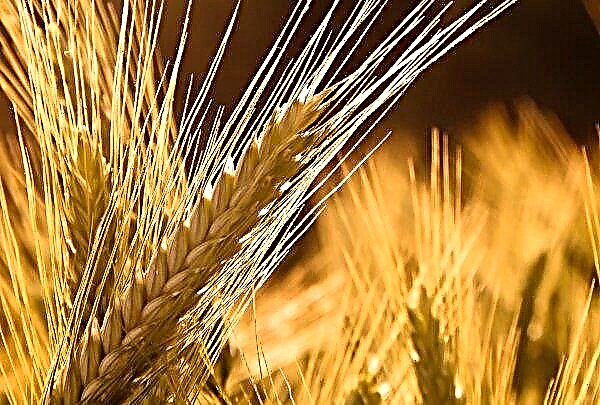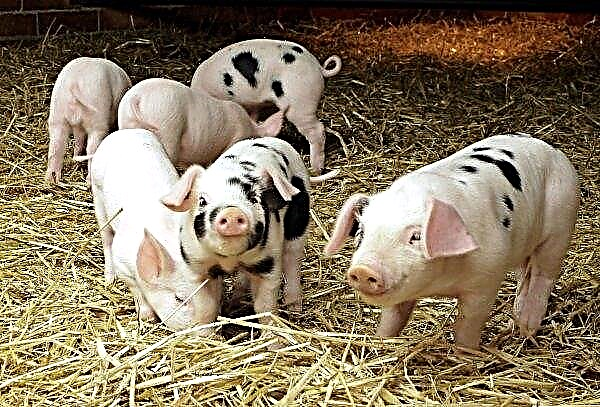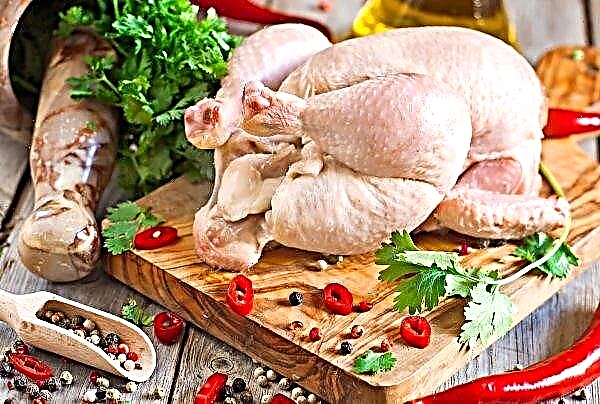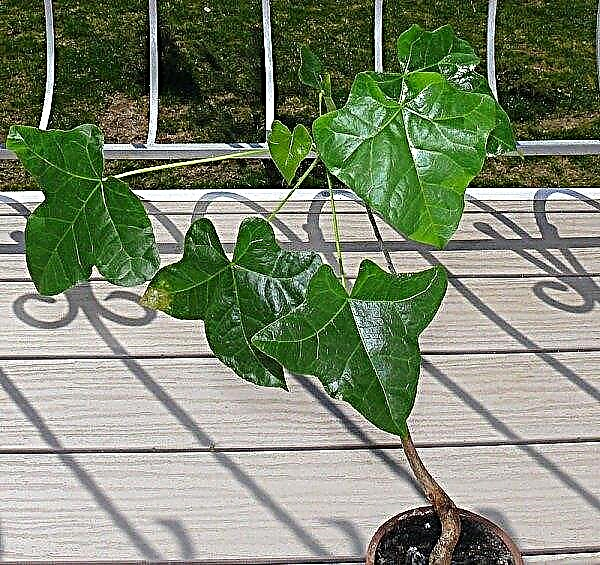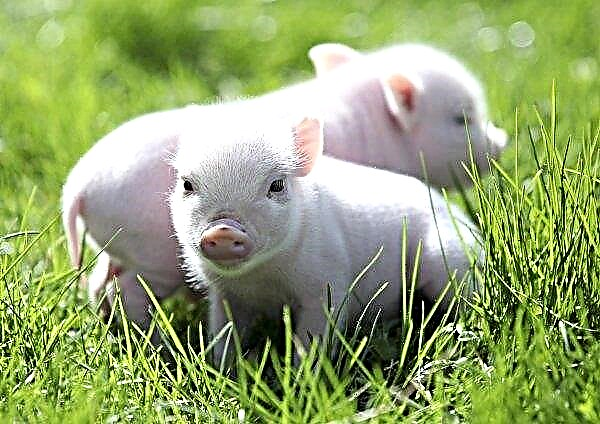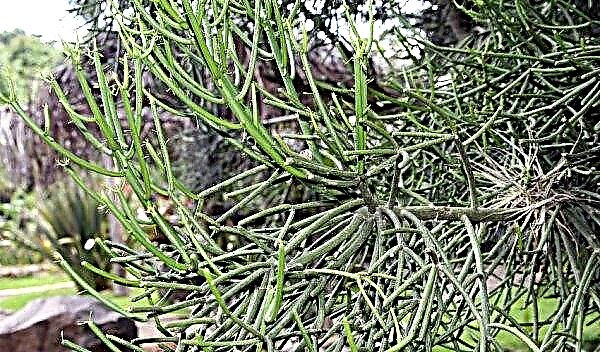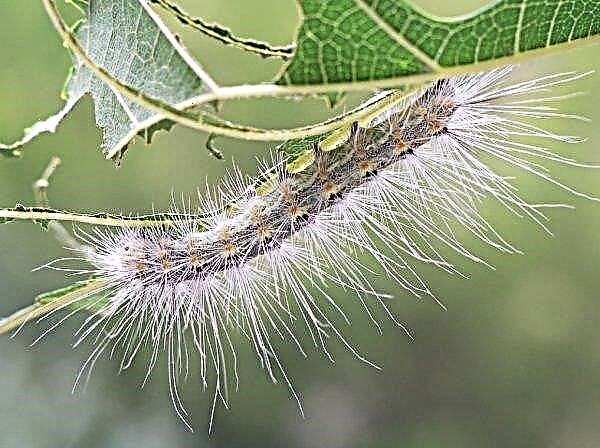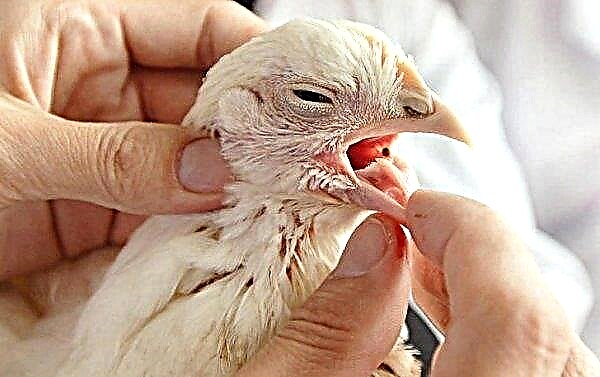Watermelon Spark is not like the melon product familiar to most. Many farmers and summer residents want to grow this variety on their site. In order to get a rich harvest, be sure to read the rules for planting and growing crops described below.
Description and characteristics of the variety
Watermelons of the Ogonyok variety have the following characteristics:
- thin, branched lashes;
- leaves are dense in texture, elongated-triangular in shape, have pubescence, petioles are long;
- the root system grows to 1 m in length;
- the fruits are small, round, weighing 2–2.5 kg;
- peel is dark green without stripes, thin;
- the pulp is granular, juicy, bright red in color;
- the seeds are small;
- the taste is sweet.
Did you know? In 1981, a Japanese farmer developed a cube-shaped hybrid of watermelon.
Spark is an early ripe variety. Fruits ripen in 70–80 days. From 1 hectare of plantings, farmers harvest an average of 16.5 tons of crops. Productivity depends on weather conditions and crop care.
Advantages and disadvantages
- Gardeners distinguish the following merits of the variety:
- unpretentiousness to leaving;
- resistance to cold;
- early ripening;
- large crop;
- resistance to common diseases;
- the pulp is juicy and sweet.

- Watermelon Spark has two drawbacks:
- thin skin;
- lack of shelf life - the fruits will not be stored for more than a month.
Optimal timing for growing
With the seedlingless method, seeds are sown in the soil from April 15 to May 10. Sowing seedlings is best done from April 1 to 10. The grown seedlings are planted in the soil from May 20 to June 10.
Preparatory work
In order for the plant to grow, the site must be prepared in advance. Seeds are also prepared. These measures allow avoiding problems in the development of plantings in the future.
Site selection and preparation
Ideal conditions for planting watermelons:
- the area is not shaded;
- sandy or sandy loamy soil;
- acidity about 7 pH;
- previously, wheat, legumes, onions, cabbage, alfalfa grew on the site.
Important! If you do not have a site with such parameters, it is better to resort to greenhouse cultivation. In the greenhouse, you can adjust the lighting, temperature and other important parameters.
The plot needs to be prepared in the fall:
- digging the soil;
- feed the soil with humus and complex fertilizing on a mineral basis.
Seed preparation
Prepare seeds for seedlings and for sowing in open soil before planting:
- Pack the material to size.
- Soak the grains in water. Pop-ups can be thrown away.
- Dry the seed and scald with water at a temperature of + 60 ° C.
- Soak the seeds in a solution of potassium permanganate.
- Wrap grains in wet gauze. When sprouts appear, watermelons can be sown.

Cultivation methods
Agronomists distinguish two ways of growing watermelon Spark: seedlings or sowing in the soil. Depending on the climate, the culture can be grown in a closed or open way. In the middle lane, a garden is suitable for growing, and in the northern regions a greenhouse is the best choice.
Seedling method
Seedling method is more reliable than sowing in soil. Strong seedlings take root faster and are accepted in growth.
Landing time
As mentioned above, seedlings are sown in the region of April 1-10. By the end of May - beginning of June, seedlings will be ready for planting in a greenhouse or garden.
Landing technology
The technology for sowing seedlings is as follows:
- Place a peat tablet in a glass or small pot. A substrate of peat, earth and sand in the proportions of 1: 1: 1 is also suitable.
- Deepen the seed 3-5 cm into the soil mixture or place it in a recess in a peat tablet.
- Humidify spray crops.
- Cover the pot with foil.

Seedling Care
In order for seedlings to grow healthy, it must be properly looked after. At first, keep the pot covered with a film in a dark place with a temperature of + 25 ° C. When the first sprouts appear, remove the film and move the pot to the light. Periodically moisten the crops. When 3 sheets appear, feed the seedlings with complex mineral fertilizing. Apply fertilizer a second time 14 days after the first.
1.5 weeks before planting in the soil, begin to harden the seedlings. To do this, the pot with the seedling must be taken out onto the street. On the first day, leave it for 1 hour in the open air. Every day, increase the time spent on the street by 1-2 hours.
Planting seedlings in the ground
Seedlings are planted in open soil according to the following instructions:
- Dig the holes staggered according to the pattern of 0.7 × 1 m.
- Remove the seedlings from the pots.
- Without removing the earthen lump, deepen the seedlings 10 cm into the hole.
- Fill the hole with earth.
- Water the plantings.

Seed directly into the ground
At the end of spring, the soil warms up to + 15 ° C. Now the seeds can be planted directly in the soil.
Do this using the following technology:
- Dig holes according to the scheme of 0.6 × 1.5 m in the garden and 0.7 × 0.7 in the greenhouse.
- In each hole, place 2-3 grains to a depth of 10 cm.
- Sprinkle the wells with soil and compact.
- Pour each well.
Care Features
Proper care is an important measure in the cultivation of watermelons, and the sort of Spark is no exception. Farmers pay special attention to watering, top dressing, bush formation, disease prevention and control.
Watering and feeding
Watermelon can be watered only with warm water. Its temperature should not be lower than + 25 ° C. Humidification of plantings is carried out in the evening. Bushes can be irrigated or drip irrigation applied.

The frequency of irrigation depends on the phase of growth.
Moisturizing fruits before ripening moderate:
- at an average air temperature - 1 time in 1-1.5 weeks;
- on hot days, every 5 days.
When the berries are actively developing, irrigation is reduced in the garden, and completely stopped in greenhouses. Periodically after irrigation, farmers apply fertilizers.
The standard feeding scheme is as follows:Important! Experienced farmers do not recommend using manure to feed watermelons.
- one week after planting;
- 2 weeks after the first fertilizer;
- 12 days after the second fertilizer.
Video: Watermelon dressing for a good harvest
As dressings fit:
- humus;
- ammonium nitrate;
- diammofoska;
- humus;
- chicken droppings.
Bush formation
Watermelon Twinkle form in one stem. Pinch the side lashes. There should be no more than three ovaries on the bush. Bush formation pattern
Bush formation pattern
Pest and Disease Control
The variety is resistant to a number of dangerous diseases, including:
- Fusarium
- anthracnose.
Other diseases are sometimes found on watermelon bushes:
- Root rot. Symptoms: leaves turn yellow, dark brown moist spots appear, the plant emits a putrid odor. Treatment: treat plantings with Fundazol or copper sulfate.

- Bacteriosis. Symptoms: white spots are observed on the leaves, then holes appear in the leaf plate, the fruits become soft. Treatment: remove diseased plants, treat healthy ones with Fundazole.
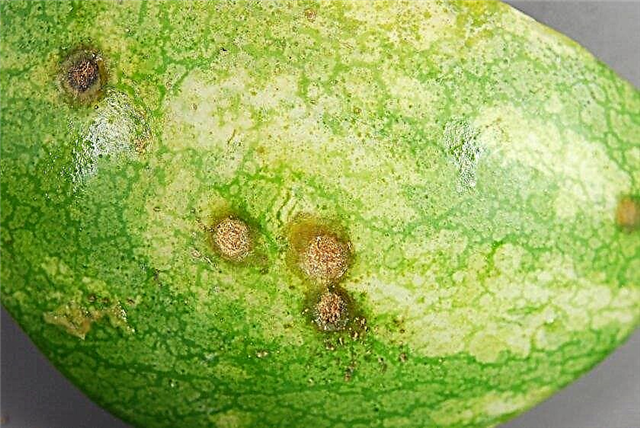
- Powdery mildew. Symptoms: leaves are covered with whitish spots that look like a scattering of flour. Treatment: treat plantations with Topaz.
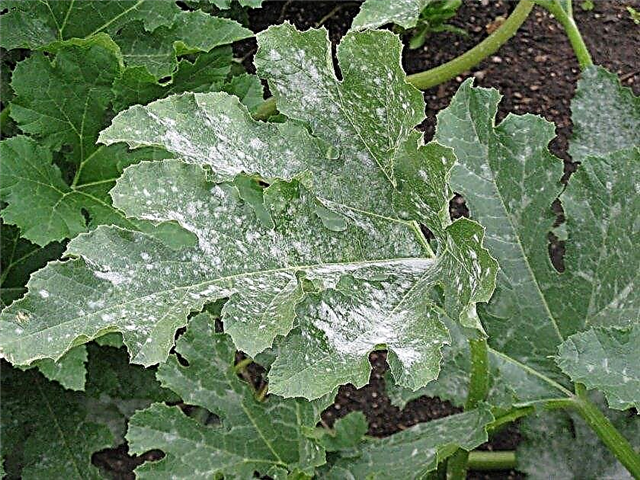
The gardener should also be wary of pests.
The most dangerous are wireworms and gourds:
- Wireworms. Symptoms: brown worms appear in the soil - later on they will develop into nutcracker beetles. Treatment: use an insecticide, for example, Decis.
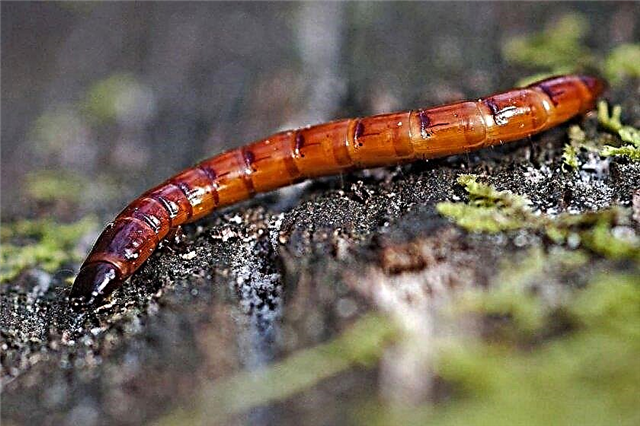
- Gourd aphids. Symptoms: small green insects on leaves and stems. Treatment: apply Fitoverm insecticide.

To avoid the appearance of parasites and the development of diseases, pay attention to the following preventive measures:
- follow crop rotation rules;
- disinfect the substrate before sowing seeds for seedlings;
- seed seeded with Phytosporin;
- do not use uncleaned tools for work;
- clean and dig the site before planting in open ground;
- Do not water the ridges by sprinkling;
- water the plantings with warm water;
- seedlings with obvious signs of the disease (plaque, rot, spotting) immediately destroy;
- observe plants and remove diseased bushes from ridges.
Did you know? Watermelons are most often used for carving - curly carvings on vegetables, fruits and berries.
Harvesting and storage
Harvest Harvest in August. Maturity can be determined by a number of signs:
- dark green color;
- a light yellow spot appeared on the fruits;
- the stalk is withered.

Gardeners harvest by hand. The fruits are torn from the main stem along with 3-5 cm of the stalk. The organization of storage does not make sense, since the light will not be stored for more than a month. Usually they are eaten immediately. To keep the fruits as long as possible, place them in a dark place with a temperature of +1 ... + 3 ° C.
Useful growing tips
Experienced farmers give some important recommendations for growing Ogonyok watermelons:
- Often gardeners do not have the opportunity to choose the right soil. If the substrate is heavy, you can add sand to it before planting.
- If the temperature drops below + 12 ° C, cover the plantings in the open ground with a film or agrofibre.
- Constantly loosen the soil and do not let it crust.
- Be sure to remove weeds as they appear.
If you decide to grow a Twinkle in your garden do not hesitate and buy seeds. The variety has simple agricultural technology, so each gardener can get a good harvest.







